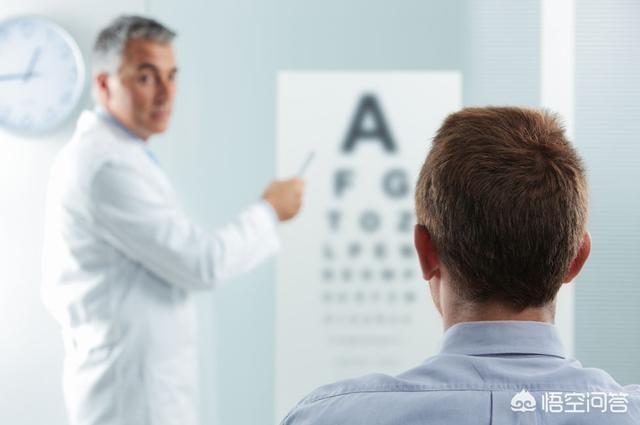What are the diagnostic criteria for diabetes? What are the symptoms in the body that indicate diabetes is on the rise?
A diabetes specialist answers the question.
The diagnostic criteria for diabetes are very simple. With the development of living standards and the popularization of medical knowledge, many people know that the typical symptoms of diabetes are "three more and one less", and they know that they should go to the hospital when they lose weight or when they are thirsty to rule out the possibility of diabetes.
So the diagnosis of diabetes is a very, very easy thing to make.
The diagnostic criteria for type 2 diabetes are mentioned in the Chinese Guidelines for the Diagnosis and Treatment of Type 2 Diabetes Mellitus, which states that diabetes is diagnosed when fasting blood glucose exceeds 7.0 mmol/L and/or postprandial blood glucose exceeds 11.1 mmol/L, and there are typical symptoms of diabetes mellitus. If one result is more than abnormal, it is necessary to monitor blood glucose again on another day and exceed the above criteria to diagnose diabetes.
This test is primarily designed to rule out the possibility of elevated blood glucose due to various contingencies, such as infection, trauma, and shock.
The subject's statement about diabetes coming on board is very interesting, as if to say that there is a physical thing that exists when a person has diabetes in the same way as when a person is pregnant. But this is not really the case, it is not that we have some symptoms that are the beginning of the appearance of diabetes.
It has been found that by the time we notice an increase in blood sugar, we may have had the disease for 7-8 years. It has been determined that at the time of diagnosis of diabetes, our islet function is half of normal and decreases at a rate of 7-8% per year as the disease progresses. So the longer the duration of the disease, the worse the islet function.
Therefore, we can not say that the appearance of certain symptoms is diabetes, we have to prevent the disease before it appears, the so-called "on the doctor to cure the disease", in good health to maintain a healthy lifestyle, in order to maintain good health. Instead of regretting when the disease appears.
Follow to learn more!
1, diabetes what symptoms appear in the body
(1) Irritable polydipsia, polyuria, polyphagia, unexplained weight loss, and random blood glucose abnormalities;
(2) Fatigue or loss of vision
(3) Difficulty in healing wounds
2, diabetes judgment criteria for, with reference to the Chinese Guidelines for the Prevention and Control of Type 2 Diabetes Mellitus (2017 edition)

Important note: Fasting, random, or 2-h post-OGTT blood glucose is the primary basis for the diagnosis of diabetes, and must be repeated to confirm the diagnosis in the absence of typical clinical signs of diabetes.
3. Importance of self-management
Diabetes is a long-term chronic disease, and the patient's daily behavior and self-management skills are one of the keys to the control of diabetes, therefore, theThe control of diabetes is not a treatment in the traditional sense but a systematic management.. Patients who received diabetes self-management education had better glycemic control than those who did not, as well as more positive attitudes, scientific knowledge of diabetes, and better diabetes self-management behaviors.You're the best diabetes doctor.。
Hello, I am a nutritionist Jian, with professional knowledge to answer your obesity, three high health problems. It is not easy to code, if you like, give a praise and attention, thank you!
The diagnostic criteria for diabetes mellitus include fasting blood glucose, 2-hour postprandial blood glucose, and random blood glucose, and the diagnosis is confirmed by a fasting blood glucose >7.0 mmoL/L or a 2-hour postprandial blood glucose or random blood glucose ≥11.1 mmol/L.
Diabetes mellitus is a systemic chronic progressive disease, mainly due to the pancreatic β-cells can not normal secretion of insulin, resulting in insulin absolute or relative insufficiency, and caused by the body to sugar metabolism disorders of the metabolism of the three major nutrients, sugar, fat and protein disorders, resulting in hepatic glycogen and myoglycogen can not be synthesized, and thus the emergence of a series of symptoms of blood glucose, urinary glucose elevation and reduced glucose tolerance.

Diagnostic criteria for diabetes:
Random blood glucose (defined as blood glucose at any time within 1 day, not taking into account the time of the last meal) ≥ 11.1 mmol/L;
Or fasting blood glucose (defined as no caloric intake for at least 8 hours in the fasting state) ≥ 7.0 mmol/L;
Alternatively, a 2-hour post-glucose load blood glucose ≥11.1 mmol/L is sufficient to determine diabetes mellitus.
Alert: 5 symptoms that indicate diabetes is on the way!

1, poor vision: when the glucose in the blood continues to rise, the eyeballs will be affected to a certain extent, and begin to become skewed, thus affecting the human vision. When suddenly appear blurred vision must cause alarm.
2, dry mouth: often feel thirsty, no matter how much water to drink, thirst will still exist, in fact, this is the diabetes to the body to send a warning.

3, how to eat are not fat: for those who never eat fat people, it is likely because they suffer from diabetes, because diabetes will be your physical strength quickly consumed, no matter how much you eat will appear the same result.
4, just eat and feel hungry: in ordinary life, we eat up to two bowls of rice, we already feel very full, but patients suffering from diabetes, they still feel hungry after eating so much rice.

5, increased nocturnal urination: urine is the most common symptom of diabetes, that is because the blood sugar in the body is rising, which leads to diabetic patients to urinate more.
To prevent diabetes and keep your blood sugar under control, do the following things on a daily basis:
I: Tea instead of "beverage"
No matter what drink, the sugar content is not low, try to drink less, usually can drink more tea, both health, but also can assist in regulating blood sugar.

People who already have high blood sugar can mix dandelion and yellow mulberry leaves and drink it with dandelion and yellow mulberry leaves tea, which is helpful in regulating blood sugar and preventing complications.
Dandelion has the role of regulating postprandial blood sugar, but also regulates blood lipids, is very suitable for obese people, while dandelion can also effectively improve the body's immunity, enhance the regenerative capacity of liver cells.
In addition, dandelion has broad-spectrum antimicrobial and anti-inflammatory properties, and insulin resistance is mostly associated with inflammation.

Mulberry leaves, in the "Shennong Ben Cao Jing" is known as "immortal leaves", traditional Chinese medicine is also commonly used in the treatment of "thirst", which is equivalent to the current diabetes mellitus.
Modern research has also confirmed that the yellow mulberry leaf does have a hypoglycemic effect: the only yellow mulberry leaf in the plant contains GAL-DNJ alkaloids, which is a glycosidase inhibitor. By improving the peripheral tissues of insulin utilization ability and promote sugar transport and reduce blood sugar.
Two: Stay away from bad habits
Apart from genetic factors, diabetes occurs more often as a result of bad lifestyle habits.

Eat a diet with fewer sweets and make sure you have three regular meals. Have a balanced nutritional structure, especially eat breakfast. Eating breakfast helps a lot in controlling blood sugar.
Try not to smoke during the day; studies have found that smoking ≥2 packs (40 cigarettes) per day increases the risk of diabetes by 45% in men and 74% in women compared to nonsmokers.

Don't stay up too late. Staying up too late will interfere with your body's normal metabolic activity, which will increase the secretion of some of your body's hormones, which will lead to a rise in blood sugar.
III: Exercise in moderation and keep your weight under control
Life is about exercise, especially with chronic metabolic diseases, more should be based on their own situation, the amount of exercise, not only conducive to weight control, but also improve myocardial function, promote blood circulation, blood sugar control is also helpful.

For diabetics, before exercising, make sure that your blood glucose is relatively stable and that your blood glucose is <14; during exercise, carry sugar with you to avoid symptoms of hypoglycemia during exercise.
Exercise must be done consistently for better results, preferably within 30 minutes - 3 hours after meals.
Note: All images are from the Internet, if any infringement can be contacted for deletion.
Diabetes mellitus is a group of metabolic disorders characterized by hyperglycemia. Hyperglycemia, on the other hand, is caused by defective insulin secretion or its impaired biological action, or both. The prolonged hyperglycemia present in diabetes leads to chronic damage and dysfunction of various tissues, especially the eyes, kidneys, heart, blood vessels, and nerves.



When these 5 symptoms appear frequently in the body, it means that diabetes has taken hold and needs to be controlled before it's too late!
As people's living conditions continue to improve, we obviously feel that the food is richer than before, and the quality of life is improving year by year. However, some chronic diseases, such as diabetes, are very common in middle and old age. After getting diabetes, you need to take long-term medication and measure your blood sugar frequently. How can you tell if you have diabetes? When the body frequently appear these 5 symptoms, that diabetes has been on the body, need to control before it is too late!
In recent years, the probability of diabetes is also skyrocketing, China has become a diabetes country. The danger of diabetes lies mainly in the persistent damage to various organs of the body caused by excessively high blood sugar. If blood sugar is properly controlled, many serious complications can be avoided, and the quality of life is not too different from normal people. So how do we detect diabetes early? These 5 early signs will tell you!
1、Dry mouth and tongue
Many diabetic patients will have a dry throat like fire and thirst and other symptoms, in order to alleviate this situation they will drink a lot of water, and then urinate too much and keep going to the toilet, but then immediately feel dry mouth and tongue, which will form a vicious circle and can not improve their own symptoms.
2. Hungry just after eating
This is due to the body's insulin function abnormalities caused by fat, muscle and other aspects of the function is affected, and if too much insulin secretion will directly affect the brain and produce a feeling of fasting, which can easily lead to friends just after eating the situation of hunger.
3. Significant wasting
Since diabetes is a huge energy drain on the body, it is important to take it seriously when your appetite is good and your weight is getting lighter, as this is most likely caused by diabetes slowly draining the energy from your body.
4. Polyuria
Polyuria is one of the common symptoms of diabetic patients, this is due to the body's blood sugar level is getting higher and higher, * receive the message will be through the way of urination to discharge excess sugar, which will lead to the patient to appear in the urinary frequency of the symptom, so once these symptoms appear, think of diabetes caused by and pay attention to.
5、Vision deterioration
If you experience blurring of vision or loss of vision during a certain period of time, don't think that it is an eye disease, it is most likely caused by diabetes because diabetes will increase the blood sugar level in the body, which will gradually lead to distortion of the eyeballs and the symptoms of poor vision.
Diabetes is quite dangerous to your health, and diabetic complications can easily attack* if once your blood sugar is not well controlled. Therefore, it is necessary for all of us to pay attention to the prevention of diabetes. Moreover, there are some signals in the early stage of diabetes, so we can pay attention to these signs in order to achieve early detection and early treatment of the disease. When the body frequently appear these 5 symptoms, that diabetes has been on the body, need to control before it is too late! Everyone hurry to share this knowledge of disease prevention, so that more people can benefit.
Diabetes is a chronic disease that can affect various organs of the body, and to prevent or treat it you need to know about the disease, and the gold standard for diabetes diagnosis - the glucose tolerance test.
1. When venous fasting blood glucose <6.1mmol/L and blood glucose <7.8mmol/L two hours after taking glucose, it indicates that the body's ability to regulate blood glucose after eating glucose is normal, and it is normal glucose tolerance.
2. When venous fasting blood glucose ≥7.0mmol/L or OGTT two-hour blood glucose ≥11.1mmol/L, it means that the body's ability to process glucose after taking it has been significantly reduced, and the diagnostic criteria for diabetes have been met.
3. When venous fasting blood glucose <7.0mmol/L and OGTT two-hour blood glucose between 7.8 and 11.1mmol/L, it means that the body's ability to regulate glucose is mildly reduced, and the diagnostic standard of impaired glucose tolerance has been reached.
4. When venous fasting blood glucose is between 6.1 and 7.0 mmol/L and OGTT two-hour blood glucose ≤ 7.8 mmol/L, it means that the body's ability to regulate blood glucose after taking glucose is still good, but the ability to regulate fasting blood glucose is mildly reduced, and the diagnostic standard of impaired fasting blood glucose has been reached.

According to statistics, half of diabetic patients will show typical symptoms, the other half of the symptoms are not obvious, so when some of the following symptoms appear in your life, pay attention to whether you have diabetes.
1. The typical symptoms of diabetes mellitus are "three more and one less", more drinking, more urination, more eating and weight loss.
2. Pre-meal hypoglycemia with a strong sense of hunger. This is due to the patient's delayed secretion of insulin, which is not synchronized with the changes in blood glucose and is secreted in large quantities before meals, resulting in low blood glucose levels before meals and a particularly strong sense of hunger.
3. Postural hypotension. Abnormally elevated blood glucose causes damage to the body's vegetative nerves, often resulting in dizziness, blurred vision and even fainting.
4. Skin infection and itching. High blood sugar can stimulate the skin nerve endings and cause itching and skin infections.
5. Oral infections are frequent. Often manifested as gum recession or swelling and pain, periodontal infection, etc., and serious loose teeth or even loss.
6. Wounds are difficult to heal. Diabetes tends to cause peripheral vasculopathy, and when an injury occurs, the tissues around the wound are affected by diabetes, making healing difficult.
7. Sudden loss of vision and blurred vision. Hyperglycemia is prone to retinopathy, which affects vision.
8. Abnormal sensation at the ends of limbs, numbness of hands and feet. This is due to diabetes can cause peripheral neuropathy, the patient will appear symmetrical limb sensory abnormalities.
9. Abnormal sweating, excessive sweating in the upper body. This is also due to the patient's phytoneuropathy, resulting in abnormal sweating, especially sweating in the upper half of the body is obvious, and the lower body sweats less.
10. Drowsiness and even coma. Some older people suffering from diabetes but they do not know, in severe dehydration, infection and other triggers, can cause drowsiness, severe hypertonic coma or ketoacidosis coma.
You should also be on the lookout for diabetes when you experience gastrointestinal disorders, bloating, constipation, difficulty urinating, recurrent urinary tract infections, sexual dysfunction, osteoporosis, and other problems.
I hope you find it helpful.
This question and answer are from the site users, does not represent the position of the site, such as infringement, please contact the administrator to delete.